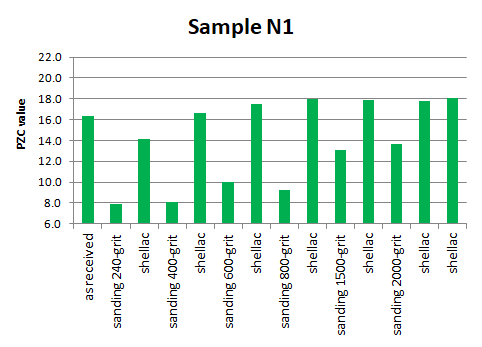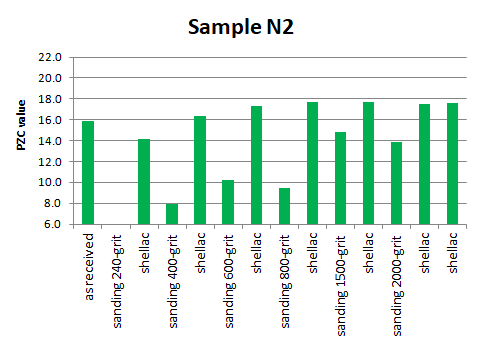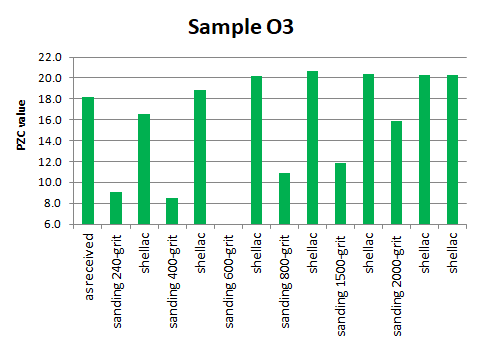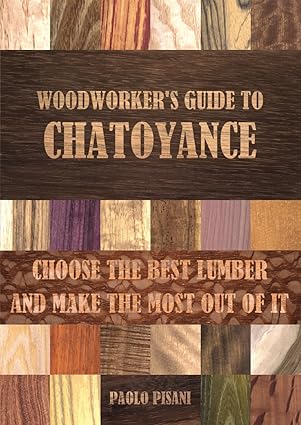In this set of tests 3 Curly Maple veneer samples were subjected to a number of consecutive steps of sanding and Shellac coating, to simulate a commonly used finishing technique. Blonde Dewaxed Shellac “Medium” (2 parts in 13 parts of Alcohol) was employed for the test. Table and charts below summarize the results:




The samples are from consecutive sheets of the flitch used in surface preparation on Curly Maple, where dense shellac (4 part in 13 parts of Alcohol) was used, so results may also be compared:

In conclusion, it would seem that
1) it is confirmed that sanding to a higher grit provides better results on the finished product
2) if using an alternating sequence of sanding + finishing, the best results are obtained stopping at 800-grit sanding
3) in this test, the alternating sequence did not provide significant improvements to the “sand and then finish” recipe
Pictures below show the appearance at some different stages:




Want to know more? Get Woodworker’s Guide to Chatoyance!

Available on Amazon in 12 countries – just click on your flag below…
… and enjoy the read!











